GENUINE EXPERTISE
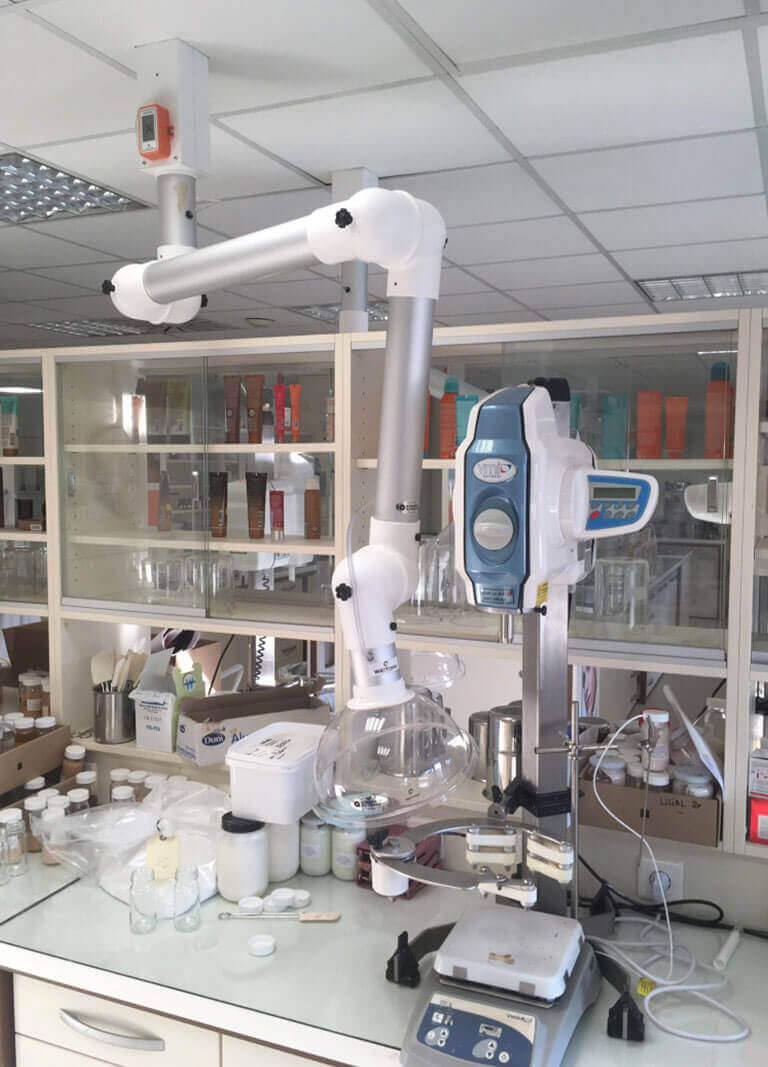
Extraction
WATTOHM is the specialist in custom suction systems. We design and manufacture hundreds of different devices, including industrial and laboratory-grade suction arms, suction backs, suction tables, Pouyès rings, U-shaped collectors, and fume hoods.
These systems are made from black steel with a galvanized or painted finish, stainless steel (304L or 316L), and various types of plastic, such as PE, PVC, PEHD, and PPsEl.
The shape and design of the suction systems are the fundamental considerations in our installations. These elements allow us to determine the required airflow based on the capture speeds recommended by the INRS or ASN. They also integrate ergonomic features at workstations to enhance operator comfort, reduce noise levels, and facilitate cleaning operations.
We then define transport speeds within the piping system, ranging from 5 m/s (simple ventilation) to 20 m/s (dust removal) or 30 m/s (pneumatic transfer).
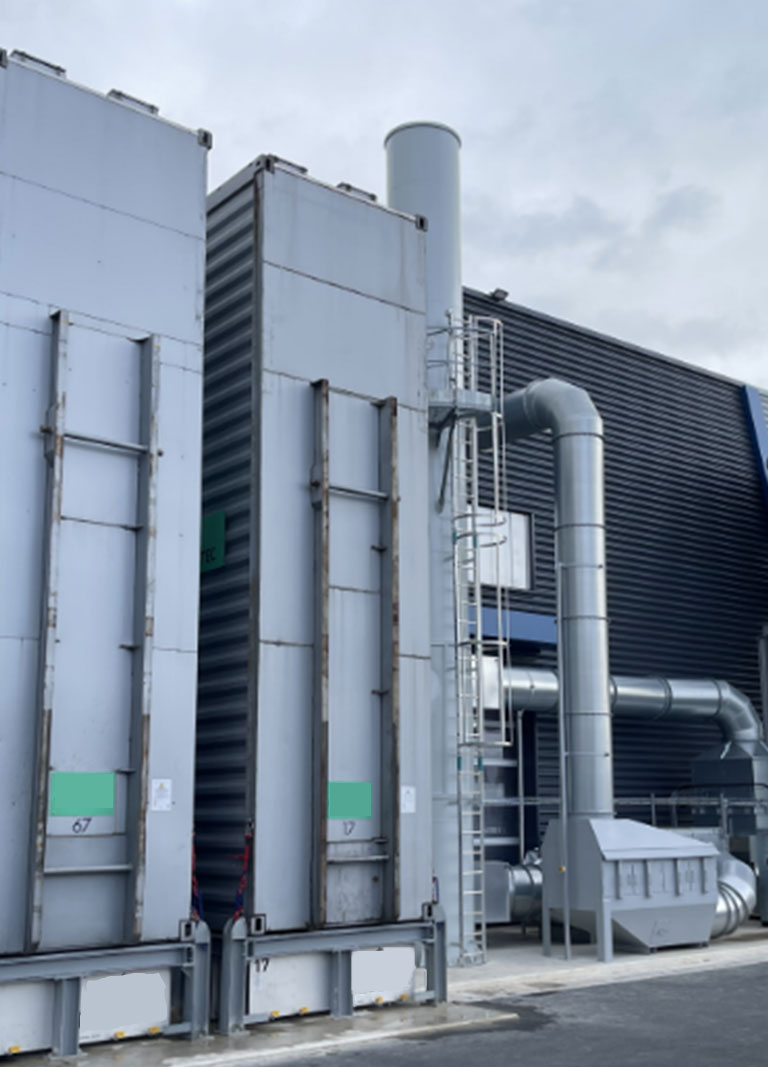
Filtration
WATTOHM designs and integrates filtration solutions for gases, odors and vapors using physical adsorption and chemisorption.
The physical process of adsorption recovers undesirable molecules dispersed in a solvent. Activated carbon is recommended for separating noxious gases and eliminating unpleasant odours. The porous structure of activated carbon is ideal for this purpose, as it ensures a high separation rate while preserving the longevity of the filter. Adsorption is a reversible technology, as the activated carbon can be reactivated by a desorption process.
Certain factors influence the efficiency and lifespan of activated carbons, such as: time of use, passage speed and exchange time, gas composition, gas concentration, molecular structure, temperature and humidity, etc.
Chemisorption involves direct contact between the adsorbent (treated activated carbon) and the adsorbate (molecule to be treated). The process is therefore the result of a chemical reaction between the adsorbate molecules and the adsorbent surface. This is why the adsorption capacity is greater in the case of physical adsorption.
Chemisorption causes a chemical reaction between the elements, so its reactivation capacity is less important. The element regularly used for chemisorption is potassium permanganate, an excellent oxidant, used for hydrogen sulphide and nitrogen oxide.
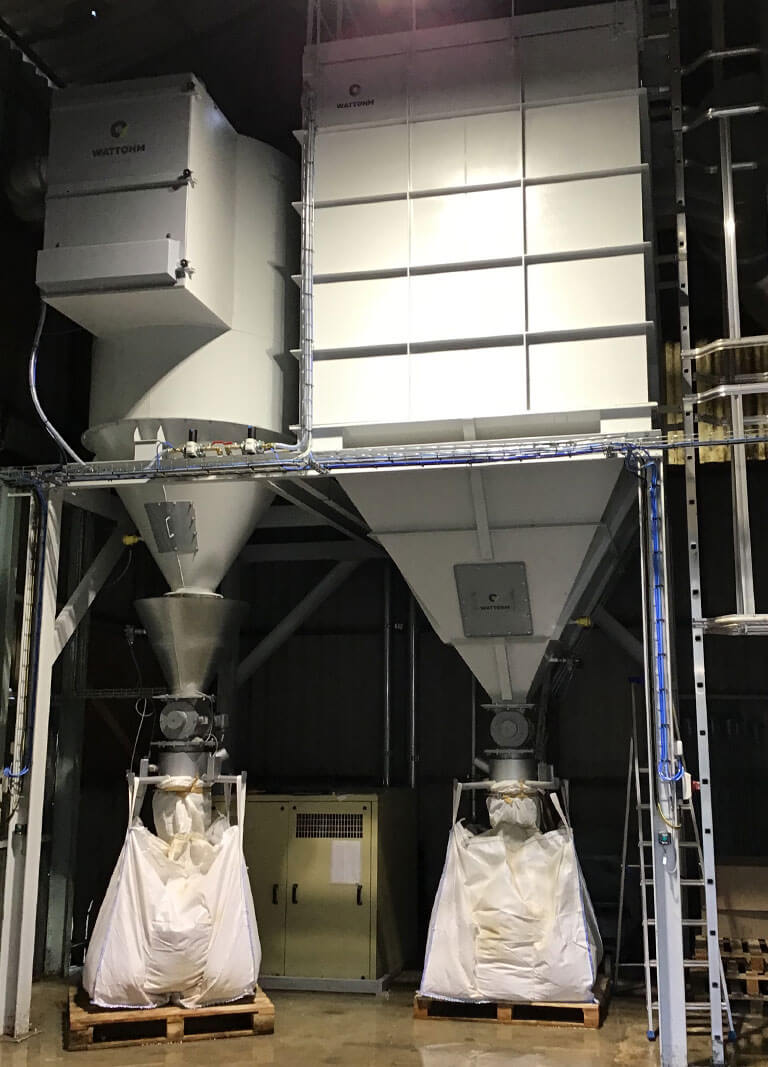
Dust collector
Some processes generate so much dust on a continuous basis that so-called static filtration is not enough. The media become clogged and suction quickly becomes ineffective. Dust collectors solve this problem by continuously cleaning the filter media.
WATTOHM designs and integrates simple and more complex dedusting solutions, with vacuum resistance for Centralised Cleaning or Pneumatic Transport. More complex solutions are sometimes required, such as Bag-In Bag-Out devices, OEB3 or OEB4 containment, ATEX ST1, ST2 or ST3, explosion-proof up to 1 bar, protection against explosion by inerting, etc.
Our filtration equipment can be designed either in black steel, with a painted or galvanised finish, or in stainless steel; with high-temperature, hot-gas, thermal insulation and heat-tracing variants…
The choice of media type – pockets, sleeves, cartridges or rigid cassettes – ensures that the atmospheric emission rate complies with current regulations (40 mg/m3, 10 mg/m3, 1 mg/m3 or less with final filters).
Our designs take account of the needs of maintenance departments: rapid access to filter media, inspection hatches, means of access, continuous monitoring, etc.
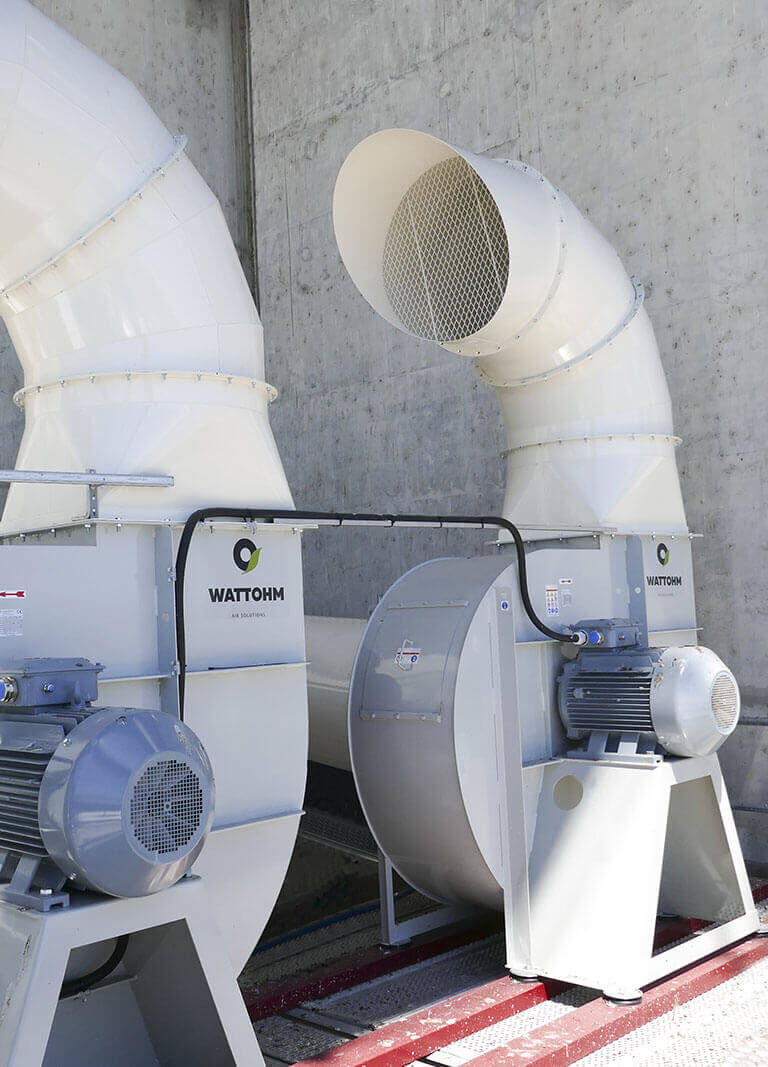
Industrial fans
When the source of pollution is more diffuse and source capture is not possible, WATTOHM offers general ventilation or dilution ventilation solutions. This type of ventilation dilutes the concentration of pollutants in workshops or workplaces, without preventing their emission.
This process brings fresh, filtered and conditioned air into workplaces, helping to clean up the air in industrial environments.
WATTOHM selects helical and centrifugal fans to meet the flow rate/pressure requirements of each installation. We also take into account the constraints specific to each site: space requirements, vibration phenomena, noise levels required at workstations and property boundaries, and energy consumption. The discharge of treated air must also comply with current regulations.
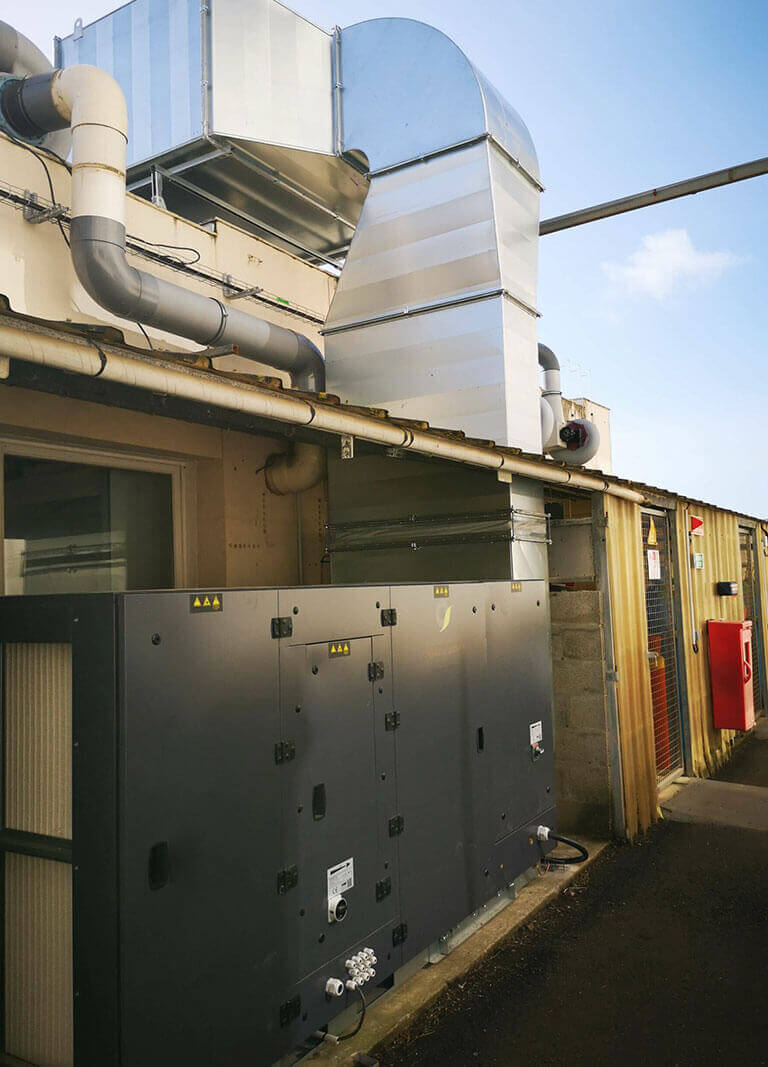
Compensation
Whether for a specific ventilation installation using source capture or for a general ventilation installation, it is essential to compensate the extracted air with a supply of fresh air.
The aeraulic balance of a building is an important factor in guaranteeing the efficiency of extraction systems. In addition, uncontrolled air inlets can generate parasitic air flows in workplaces, disrupting extraction systems at low speeds (0.5 m/s).
WATTOHM offers compensation systems to recover some of the heat and cold extracted, taking account of the extraction devices. We install low- or high-velocity diffusion systems, by displacement, induction, destratification processes, etc. to take account of operator comfort: air speed, temperature, humidity, etc.
3D digital simulation enables us to visualise and understand air flows in industrial buildings.
Our designs take account of the needs of maintenance departments: rapid access to filter media, inspection hatches, means of access, continuous monitoring, etc.
